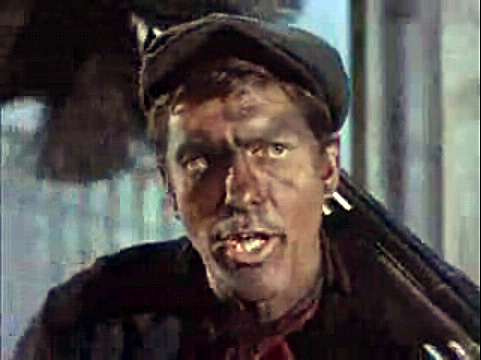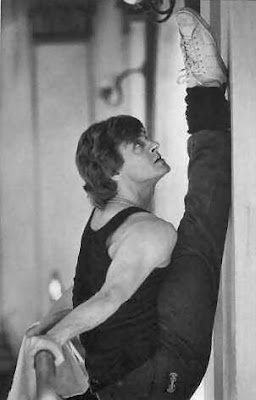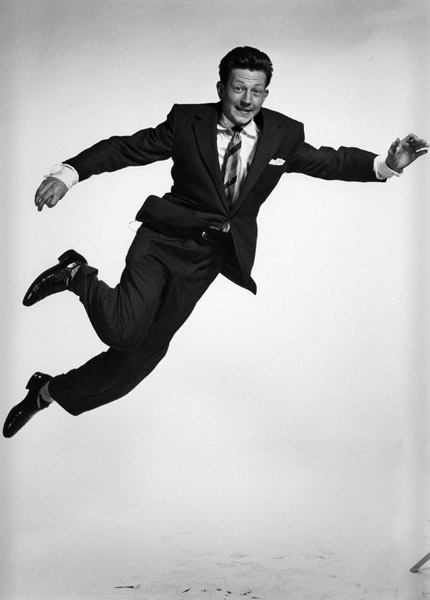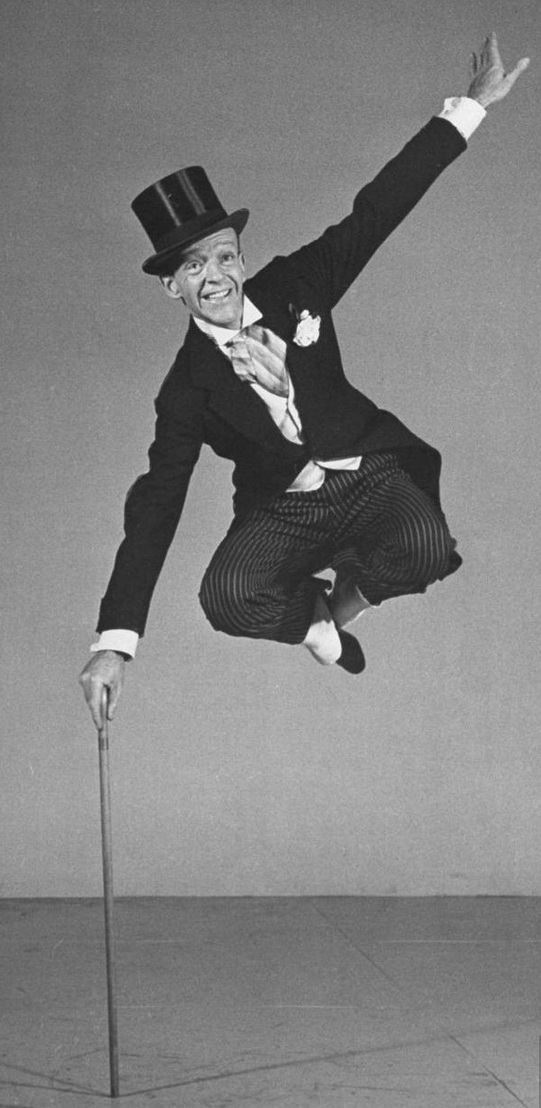
Dick Van Dyke!
I never wanted to be an actor and to this day I don’t. I can’t get a handle on it. An actor wants to become someone else. I am a song-and-dance man and I enjoy being myself, which is all I can do.
Van Dyke was born in West Plains, Missouri, to Loren (nickname “Cookie”) and Hazel (née McCord) Van Dyke, but he grew up in Danville, Illinois. He is the older brother of actor Jerry Van Dyke, who is best known for a role on the TV series Coach. Dick’s grandson, Shane Van Dyke, is also an actor and directed Titanic II. Dick is of Dutch descent on his father’s side; his mother was a descendant of Mayflower passenger Peter Browne from England.
Among his high school classmates in Danville where Donald O’Connor and Bobby Short, who both would go on to successful careers as entertainers themselves. Van Dyke’s mother’s family was very religious, and for a brief period in his youth he considered a career in ministry, although a drama class in high school convinced him that his true calling was as a professional entertainer. In his autobiography he wrote, “I suppose that I never completely gave up my childhood idea of being a minister. Only the medium and the message changed. I have still endeavored to touch people’s souls, to raise their spirits and put smiles on their faces”. Even after the launch of his career as an entertainer, he taught Sunday school in the Presbyterian Church, where he was an elder, and he continued to read theologians such as Buber, Tillich, and Bonhoeffer, whom he has said helped explain in practical terms the relevance of religion in everyday life.
During World War II, Van Dyke enlisted in the United States Army Air Corps where he became a radio announcer, later transferring to the Special Services entertaining troops in the Continental United States.
During the late 1940s, Van Dyke was a radio DJ in Danville, Illinois. In 1947, Van Dyke was persuaded by Phil Erickson to form a comedy duo with him called “Eric and Van—the Merry Mutes.” The team toured the West Coast nightclub circuit, performing a mime act and lip synching to old 78 records. They brought their act to Atlanta, Georgia, in the early 1950s and performed a local television show featuring original skits and music called “The Merry Mutes”.
In November 1959, Van Dyke made his Broadway debut in The Girls Against the Boys. He then played the lead role of Albert Peterson in Bye Bye Birdie, which ran from April 14, 1960 to Oct 7, 1961. In a May 2011 interview with Rachael Ray, Van Dyke noted that when he auditioned for a smaller part in the show he had no dance experience, and that after he sang his audition song he did an impromptu soft-shoe out of sheer nervousness. Gower Champion, the show’s director and choreographer, was watching, and promptly went up on stage to inform Van Dyke he had the lead. An astonished Van Dyke protested that he could not dance, to which Champion replied “We’ll teach you”. That musical won four Tony awards including Van Dyke’s Best Featured Actor Tony, in 1961. In 1980, Van Dyke appeared as the title role in The Music Man on Broadway.
Dick Van Dyke’s start in television was with WDSU-TV New Orleans Channel 6 (NBC), first as a single comedian and later as emcee of a comedy program. Van Dyke’s first network TV appearance was with Dennis James on James’ Chance of a Lifetime in 1954. He later appeared in two episodes of The Phil Silvers Show during its 1957–1958 season. He also appeared early in his career on ABC’s The Pat Boone Chevy Showroom and NBC’s The Polly Bergen Show. During this time a friend from the Army was working as an executive for CBS television and recommended Van Dyke to that network. Out of this came a seven-year contract with the network. During an interview on NPR’s Wait Wait… Don’t Tell Me! program, Van Dyke said he was the anchorman for the CBS morning show during this period with Walter Cronkite as his newsman.
From 1961 to 1966, Van Dyke starred in the CBS sitcom The Dick Van Dyke Show, in which he portrayed a comedy writer named Rob Petrie. Originally the show was supposed to have Carl Reiner as the lead but CBS insisted on recasting and Reiner chose Van Dyke to replace him in the role. Van Dyke won three Emmy Awards as Outstanding Lead Actor in a Comedy Series, and the series received four Emmy Awards as Outstanding Comedy Series.
From 1971 to 1974, Van Dyke starred in an unrelated sitcom called The New Dick Van Dyke Show in which he starred as a local television talk show host. He received a Golden Globe nomination for his performance but the show was less successful than its predecessor, and Van Dyke pulled the plug on the show after just three seasons.
In 1973, Van Dyke voiced his animated likeness for the October 27, 1973 installment of Hanna-Barbera’s The New Scooby-Doo Movies, “Scooby-Doo Meets Dick Van Dyke,” the series’ final first-run episode. The following year, he received an Emmy Award nomination for his role as an alcoholic businessman in the television movie The Morning After (1974). Van Dyke revealed after its release that he had recently overcome a real-life drinking problem. He admits he was an alcoholic for 25 years. After a few guest appearances on the long-running comedy-variety series The Carol Burnett Show, Van Dyke became a regular on the show, in the fall of 1977. However, he only appeared in half of the episodes of the final season. For the next decade he appeared mostly in TV movies. One atypical role was as a murdering judge on the second episode of the TV series Matlock in 1986 starring Andy Griffith. In 1989, he guest-starred on the NBC comedy series The Golden Girls portraying a lover of Beatrice Arthur’s character. This role earned him his first Emmy Award nomination since 1977.
His film work affected his TV career: the reviews he received for his role as D.A. Fletcher in Dick Tracy led him to star first as the character Dr. Mark Sloan in an episode of Jake and the Fatman, then in a series of TV movies on CBS that became the foundation for his popular television drama Diagnosis: Murder. Van Dyke continued to find television work after the show ended, including a dramatically and critically successful performance of The Gin Game, produced for television in 2003 that reunited him with Mary Tyler Moore. In 2003, he portrayed a doctor on Scrubs. A 2004 special of The Dick Van Dyke Show titled The Dick Van Dyke Show Revisited was heavily promoted as the first new episode of the classic series to be shown in 38 years. Van Dyke and his surviving cast members recreated their roles; the program was roundly panned by critics. In 2006 he guest-starred as college professor Dr. Jonathan Maxwell for a series of Murder 101 mystery films on the Hallmark Channel.
Van Dyke began his film career by playing the role of Albert J. Peterson in the film version of Bye Bye Birdie (1963). Despite his unhappiness with the adaptation—its focus differed from the stage version in that the story now centered on a previously supporting character—the film was a success. That same year, Van Dyke was cast in two roles: as the chimney sweep Bert, and as bank chairman Mr. Dawes Senior, in Walt Disney’s Mary Poppins (1964). For his scenes as the chairman, he was heavily costumed to look much older, and was credited in that role as “Nackvid Keyd” (at the end of the credits, the letters unscramble into “Dick Van Dyke”). Van Dyke’s attempt at a cockney accent has been decried as one of the worst accents in film history, cited by actors since as an example of how not to sound.
In a 2003 poll by Empire magazine of the worst-ever accents in film, he came in second. According to Van Dyke, his accent coach was Irish, who “didn’t do an accent any better than I did.” Still, Mary Poppins was successful upon release and its enduring appeal has made it one of the most famous films of all time. “Chim Chim Cher-ee”, one of the songs that Van Dyke performed in Mary Poppins, won the Academy Award for Best Original Song for the Sherman Brothers, the film’s songwriting duo.
Many of the comedy films Van Dyke starred in throughout the 1960s were relatively unsuccessful at the box office, including What a Way to Go!, Lt. Robin Crusoe, U.S.N., Fitzwilly, The Art of Love, Some Kind of a Nut, Never a Dull Moment, and Divorce American Style. But he also starred (with his native accent, despite the English setting) as Caractacus Pott in the successful musical Chitty Chitty Bang Bang (1968), which co-starred Sally Ann Howes and featured the same songwriters (The Sherman Brothers) and choreographers (Marc Breaux and Dee Dee Wood) as Mary Poppins.
In 1969, Van Dyke appeared in the comedy-drama The Comic, written and directed by Carl Reiner. Van Dyke portrayed a self-destructive silent-film era comedian who struggles with alcoholism, depression, and his own rampant ego. Reiner wrote the film especially for Van Dyke, who often spoke of his admiration for silent-film era comedians such as Charlie Chaplin and his hero Stan Laurel. Twenty-one years later in 1990, Van Dyke, whose usual role had been the amiable hero, took a small but villainous turn as the crooked D.A. Fletcher in Warren Beatty’s film Dick Tracy. Van Dyke returned to motion pictures in 2006 with Curious George as Mr. Bloomsberry and as villain Cecil Fredericks in the Ben Stiller film Night at the Museum. He reprised the role in a cameo for the sequel, Night at the Museum: Battle of the Smithsonian but it was cut from the film. It can be found in the special features on the DVD release.
The Penguin Dance
Me ol’ Bamboo (Chitty Chitty Bang Bang)
Step in Time
Fun Facts about Mr. Dick Van Dyke
Often hosted game shows when he was a struggling actor. He hosted Mother’s Day (1958) and Laugh Line (1959) but turned down The Price Is Right (1956).
Older brother of entertainer Jerry Van Dyke.
According to his book “Those Funny Kids: A Treasury of Classroom Laughter”, by age 11 he had grown to 6′ 1″.
Is ambidextrous.
He enlisted to be a pilot in the Army Air Corps during World War II, but initially did not make the cut because he did not meet the weight requirement, as he was underweight. He tried three times to enlist, before barely making the cut. He actually served as a radio announcer during the war, and he did not leave the United States.
Beat out Johnny Carson for the role of Rob Petrie on what later became The Dick Van Dyke Show (1961) .
Won Broadway’s 1961 Tony Award as Best Supporting or Featured Actor (Musical) for “Bye, Bye Birdie” and a Grammy Award for the Mary Poppins (1964) soundtrack.
His comic inspiration was Stan Laurel. He says he was able to find him by looking up his name in the phone book in Santa Monica, California, where Laurel lived. He called and Laurel invited him over. The two became good friends. When Laurel died, Van Dyke delivered his eulogy at the funeral.
Says that his most memorable role is that of Bert the chimney-sweep in Mary Poppins (1964).
Overcame alcoholism in the 1970s.
In Britain, his attempt at a Cockney accent in Mary Poppins (1964) is so notorious that a “Dick Van Dyke accent” is an accepted slang term for an American’s unsuccessful attempt at a British accent. Despite that, he is quite popular in Britain.
Rob Petrie, Van Dyke’s role on The Dick Van Dyke Show (1961), was ranked #22 in TV Guide’s list of the “50 Greatest TV Dads of All Time” [20 June 2004 issue].
In his 30s and 40s, he had a talent for playing crotchety, eccentric old men. He played this kind of role in Mary Poppins (1964) as Mr. Dawes Sr. and in a The Dick Van Dyke Show (1961) episode where he played one of Rob Petrie’s elderly relatives.
Had played Lionel Jeffries’s son in Chitty Chitty Bang Bang (1968) even though Jeffries is actually six months his junior.
Was a heavy smoker for fifty years, smoking three packs of cigarettes a day for a time. He finally managed to quit using gum and patches.
Best known by the public for his starring roles as Rob Petrie on The Dick Van Dyke Show (1961) and as Dr. Mark Sloan on Diagnosis Murder (1993).
In 1968, he left Hollywood and bought a ranch in Arizona.
Did not appear in his first movie until he was 36.
Buster Keaton and Stan Laurel were two of his comedy idols. Both became fans of Dick’s classic TV series.
Received a lemon cake every Christmas from Charles Bronson, who lived nearby in Malibu, for 16 years.
Created most of his own comedy routines and physical schticks on The Dick Van Dyke Show (1961).
Helped his ex-The Dick Van Dyke Show (1961) co-star, Mary Tyler Moore get her own sitcom, in the 1970s.
Prior to being an actor, he was also a Sunday School teacher and an elder at a Presbyterian church, who ministered every Sunday.
Was longtime friends with Buddy Ebsen. Van Dyke hosted Ebsen’s memorial service on August 30, 2003.
Between Angela Lansbury, Norman Lloyd, Mickey Rooney, Ernest Borgnine, Betty White and Larry Hagman, Van Dyke is one of the stars never to retire from acting.









